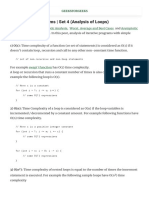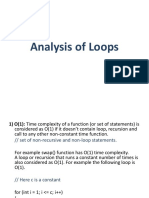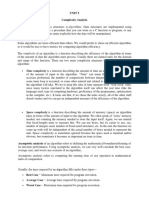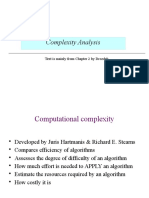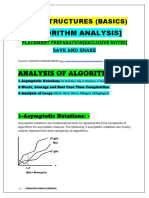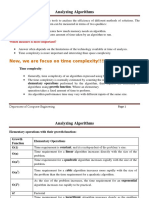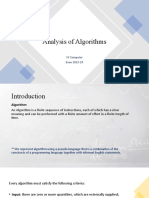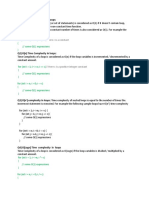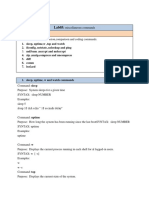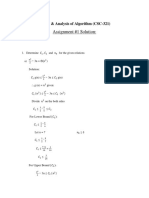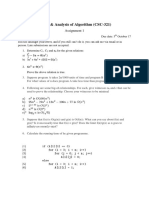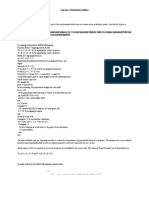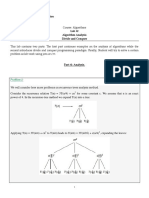0% found this document useful (0 votes)
107 views23 pagesDesign & Analysis of Algorithm (CSC-321) : Lecture 2,3 Computer Sciences Department Bahria University (Karachi Campus)
This document discusses a lecture on analyzing algorithms. It reviews basic math concepts like summations, arithmetic series, geometric series, and harmonic series. It then discusses using summations to analyze the time complexity of loops. As an example, it analyzes an algorithm with nested loops and calculates its running time is Θ(n3). It also covers common time complexities like O(1), O(n), O(n2), and O(Logn).
Uploaded by
AbdullahCopyright
© © All Rights Reserved
We take content rights seriously. If you suspect this is your content, claim it here.
Available Formats
Download as PDF, TXT or read online on Scribd
0% found this document useful (0 votes)
107 views23 pagesDesign & Analysis of Algorithm (CSC-321) : Lecture 2,3 Computer Sciences Department Bahria University (Karachi Campus)
This document discusses a lecture on analyzing algorithms. It reviews basic math concepts like summations, arithmetic series, geometric series, and harmonic series. It then discusses using summations to analyze the time complexity of loops. As an example, it analyzes an algorithm with nested loops and calculates its running time is Θ(n3). It also covers common time complexities like O(1), O(n), O(n2), and O(Logn).
Uploaded by
AbdullahCopyright
© © All Rights Reserved
We take content rights seriously. If you suspect this is your content, claim it here.
Available Formats
Download as PDF, TXT or read online on Scribd
/ 23



